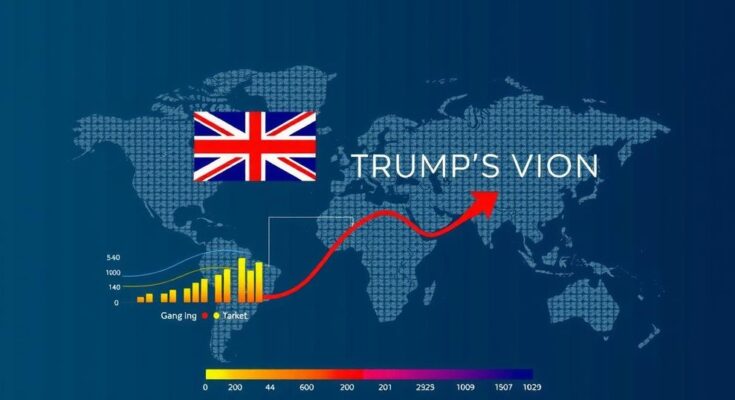Donald Trump’s return as president signals potential upheaval for Australia’s economy, marked by his aggressive tax and tariff policies. These could inflate US debt, increase borrowing rates, and disrupt global trade dynamics, notably impacting Australia’s export sectors that heavily rely on advanced manufacturing and services. Ultimately, Australia’s economic outlook must brace for the waves of change brought by a Trump-led trade agenda—protectionism looms while opportunities may also appear.
Donald Trump’s return to the presidency marks a shift in the global economic landscape, filled with uncertainty and potential disruption. As Trump prepares to take office, his agenda of tax cuts, tariff increases, and withdrawal from trade agreements signals profound shifts, particularly affecting nations like Australia. With the U.S. government poised to accumulate massive debt, global interest rates may soar, raising borrowing costs for countries worldwide. Australia, despite recent budget surpluses, may face a challenging fiscal landscape as it contends with rising interest rates, driven by Trump’s economic policies. Trump’s proposed tariffs on imports could deal a hard blow to Australia’s vital export sectors. Although the U.S. comprises only 5% of Australian exports, the stakes are heightened as many advanced manufacturing goods—40% of high-tech engines and over half the aircraft parts—find their way to American markets. As Trump’s administration embarks on a protectionist path, Australia’s ambition to broaden its economic base may falter. The ripple effects of increased tariffs extend beyond direct trade barriers; global economic volatility and elevated shipping costs are looming threats. Past experiences, like the spike in shipping rates amid Trump’s earlier tariffs on China, could resurface, placing additional burdens on Australia, an economy heavily reliant on trade, making up to 45% of its GDP. China, Australia’s top trading partner, may experience slowed growth under heavy U.S. tariffs, indirectly affecting Australian exports vital to its economy. Additionally, a Republican-controlled Congress could jeopardize U.S. participation in the WTO, undermining the foundational principles of free trade that Australia heavily relies on. Yet, amid these challenges, there lies a glint of opportunity. Retaliatory tariffs against U.S. products may offer Australian goods a competitive edge, especially in sectors like wheat and education services. However, the landscape remains fraught with unpredictability as Trump’s trade agenda unfolds and reshapes the economic paradigms of Australia and beyond.
The anticipation surrounding Donald Trump’s presidency was marked by speculation on its potential impact on global financial markets and economies. Trump’s decisive victory sets the stage for significant shifts in economic policy, including tax reductions, tariff hikes, and a withdrawal from established international agreements. These strategies imply a dramatic departure from the current rules-based trade order, with profound implications for countries with strong trade relations with the U.S., particularly Australia.
In conclusion, Trump’s imminent presidency heralds a new, uncertain era in global economics that will force Australia and other nations to adapt swiftly to his administration’s protectionist policies. His aggressive taxation and tariff agenda is poised to reshape trade dynamics, increase borrowing costs, and strain global supply chains. Nevertheless, while challenges abound, so too might opportunities arise for Australia to reposition its exports amidst a shifting landscape.
Original Source: theconversation.com



